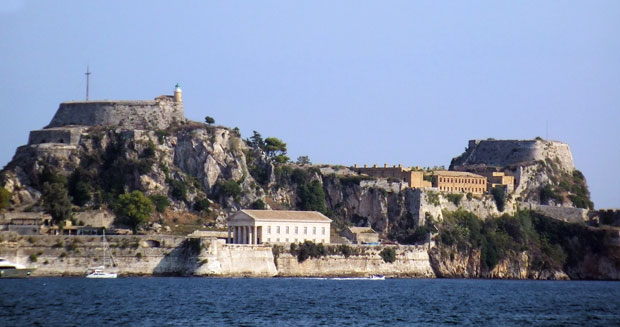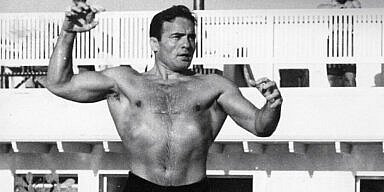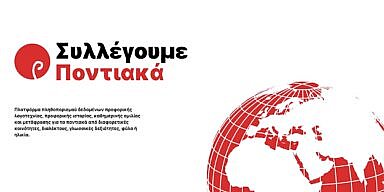Toward the end of the 14th Century, after years of the Venetian’s attempt to annex the Island of Corfu (Kerkyra) from the Sovereignty of Epiros and the Byzantine Empire, the Venetians made a successful attack and gained control of the island on March 20, 1386 which lasted to 1797 when it was ceded to the French.
After the fall of Constantinople in 1453 and subsequent occupation of Greece, Corfu was the only part of the country that never came under Turkish rule. The Turks made several attacks over the years including a siege in 1537, in which they landed 25,000 troops on the island, but after twelve days they left, but not without taking 20,000 hostages as slaves. They again tried another siege in 1571, but after occupying the Paxi islands and slaughtering the inhabitants and pillaging the countryside, the Turks then landed all along the coast of Corfu but were repulsed.
Finally, in 1573, the Turks were successful in occupying the island but the troops became so undisciplined, the Venetian and Corfiot troops counter-attacked and drove them back to their ships. After the sieges in 1571 and 1573, the Venetians undertook to work faster in building the fortifications of Corfu Town including New Fort, Avrami Fort, and The Savior’s Fort.
In 1683, the Turks were defeated at the Battle of Vienna basically ending their expansion plans into Europe, but were their plans of expansion truly ended? Corfu was still a thorn in their side and the Turks eyed it like a hawk eyes its prey.
The Seventh Ottoman-Venetian War started in 1714 and gave the Ottomans another opportunity to capture Corfu from the Venetians. In 1715 the Turks conquered the Peloponnese (known then as the “Morea”), a major possession of the Venetians, which was a crushing blow. They next turned their sights on the Ionian Islands, including Corfu, and a victory there would give them a base for an invasion into Europe, and the spread of Islam.
On July 8, 1716, after a major indecisive naval battle off the coast of Corfu between the Turks, commanded by Kapudan Pasha Canum Hoca, and the Venetians, under the command of Andrea Cornaro, the Ottomans landed 33,000 troops on the island. Corfu was defended by 8,000 troops led by Field Marshal John Mathew Schulenburg, an Austrian general in Venetian employ. From July 8 to August 8, the Turks captured several forts and laid siege to the town attempting several assaults but they could not breach the fortifications. On August 9, an intense storm destroyed the Turkish camps and panic spread among the Turkish soldiers, some say as a result of St. Spyridon’s divine intervention. The siege was broken on August 11 and the Turks abandoned their camps and they withdrew their forces on August 20. Corfu was saved.
Afterwards, as a result of Austria renewing its alliance with Venice, the Turks declared war against Austria and the Ottomans were forced to abandon their design on capturing any further Venetian possessions. In 1718 the Treaty of Passarowitz was signed and although the Turks kept the Peloponnese (Morea), it showed that the Ottoman Turks were on the defensive and their desire of conquest of the Europe, through the Ionian Islands, especially Corfu, ended.
Corfu was saved, but in reality, the West and Christianity were saved. When the Ottoman Turks were repulsed at the Battle of Vienna, and their play for Europe blocked, their only avenue to the West was through the Ionian Islands. If Corfu had fallen to the Turks, the Italian coast was only a mere 60 miles and Europe lay open to conquest and the spread of Islam. It was at Corfu, in 1716, that history was changed.



